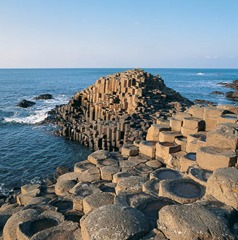Tourism’s highs and lows
 Tourist numbers show growth in visitors coming from Great Britain but decline in visitors from the Republic.
Tourist numbers show growth in visitors coming from Great Britain but decline in visitors from the Republic.
Between March 2013 and March 2014, the number of overnight trips to Northern Ireland stood at 4.1 million, a decrease of 1 per cent on the previous year. Estimated expenditure associated with these trips have increased by 4 per cent to around £735 million. During that time, Northern Ireland played host to the World Police and Fire Games, the G8 summit and the City of Culture in Derry.
In 2013, an estimated 79,000 fewer people travelled north from the Republic, a decrease of 18 per cent. Spending by visitors from the Republic decreased by £7 million. Trips taken by people from within Northern Ireland fell by 3 per cent, a decrease of 64,000 people holidaying locally, and their expenditure fell by £15 million.
In contrast, visitors from Great Britain increased by 8 per cent and tourists from overseas by 4 per cent. The number of nights spent here by these tourists and their expenditure increased by 2 per cent and 12 per cent respectively.
Belfast was the primary tourism destination for external visitors in 2011 and 2012, with 48 per cent of their visits being spent there. The city accounted for 1.1 million overnight trips and 52 per cent of all visitor spending, representing an estimated spend of £232 million per year.
Visitors to the Causeway Coast and Glens accounted for 23 per cent of all overnight trips and 21 per cent of all expenditure during these stays. Eighteen per cent of these visitors were from outside of Northern Ireland, with 369,000 making an overnight visit. The next most visited destinations for external visitors were the Mournes with 166,000 visitors and Derry with 158,000 visitors.
Half of all external overnight visitors to Northern Ireland in 2013-2014 were visiting friends and relatives. Of those travelling from Great Britain, 61 per cent were visiting family or friends, and 46 per cent of those visiting from the Republic were also travelling for this reason.
Business trips fell by 31 per cent on the previous year. The proportion of business visitors from the Republic was only 7 per cent, the lowest of all source regions. Nineteen per cent of business visitors came from Great Britain and the Netherlands had the highest number of trips motivated by business, at 34 per cent.
Visits to Northern Ireland for a holiday increased by 2 per cent. Holiday-makers from Great Britain increased by 5 per cent. However, the number of people from the Republic coming to Northern Ireland for a holiday fell by 21 per cent.
In 2013, 57 per cent of external visitors stayed with friends or family and just 18 per cent in hotels. Hotel room occupancy was at 62 per cent in 2011 and 2012.
Tourism numbers have experienced growth and decline in visitors from Great Britain and the Republic respectively. As the Executive aims to increase visitor numbers to 4.2 million by December 2014, it will be interesting to examine where future visitors will travel from.





